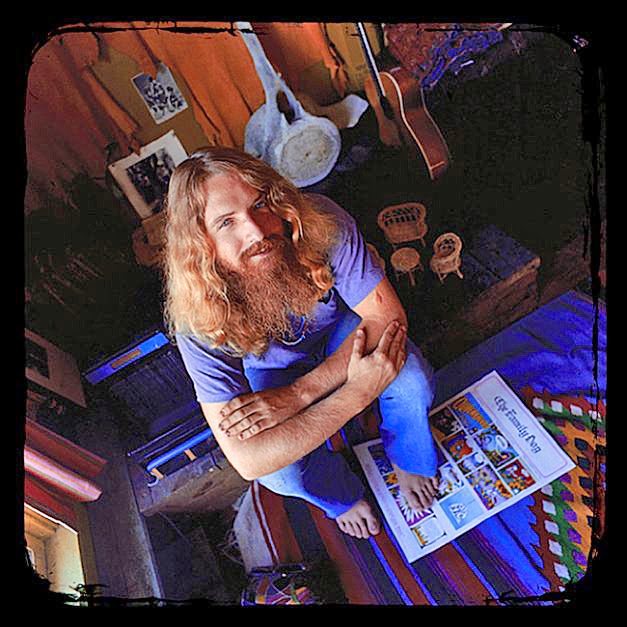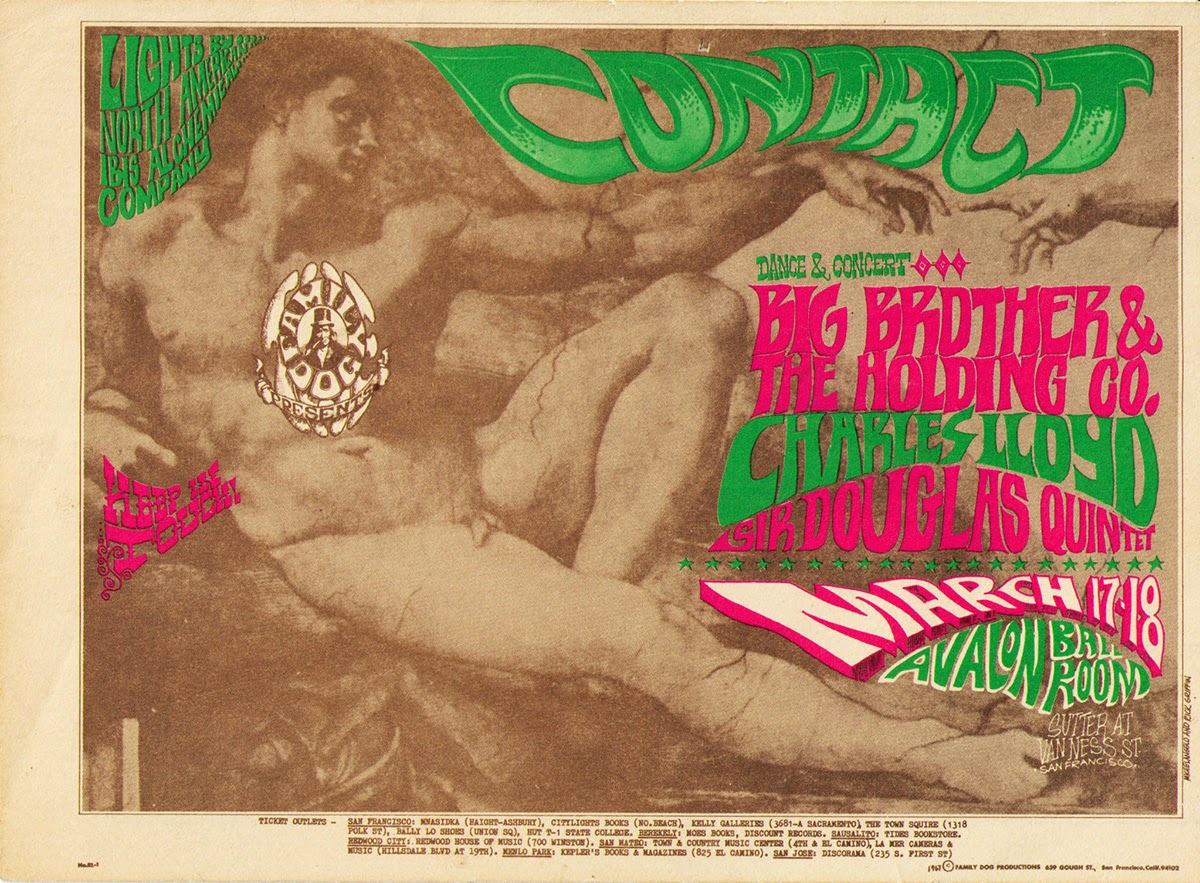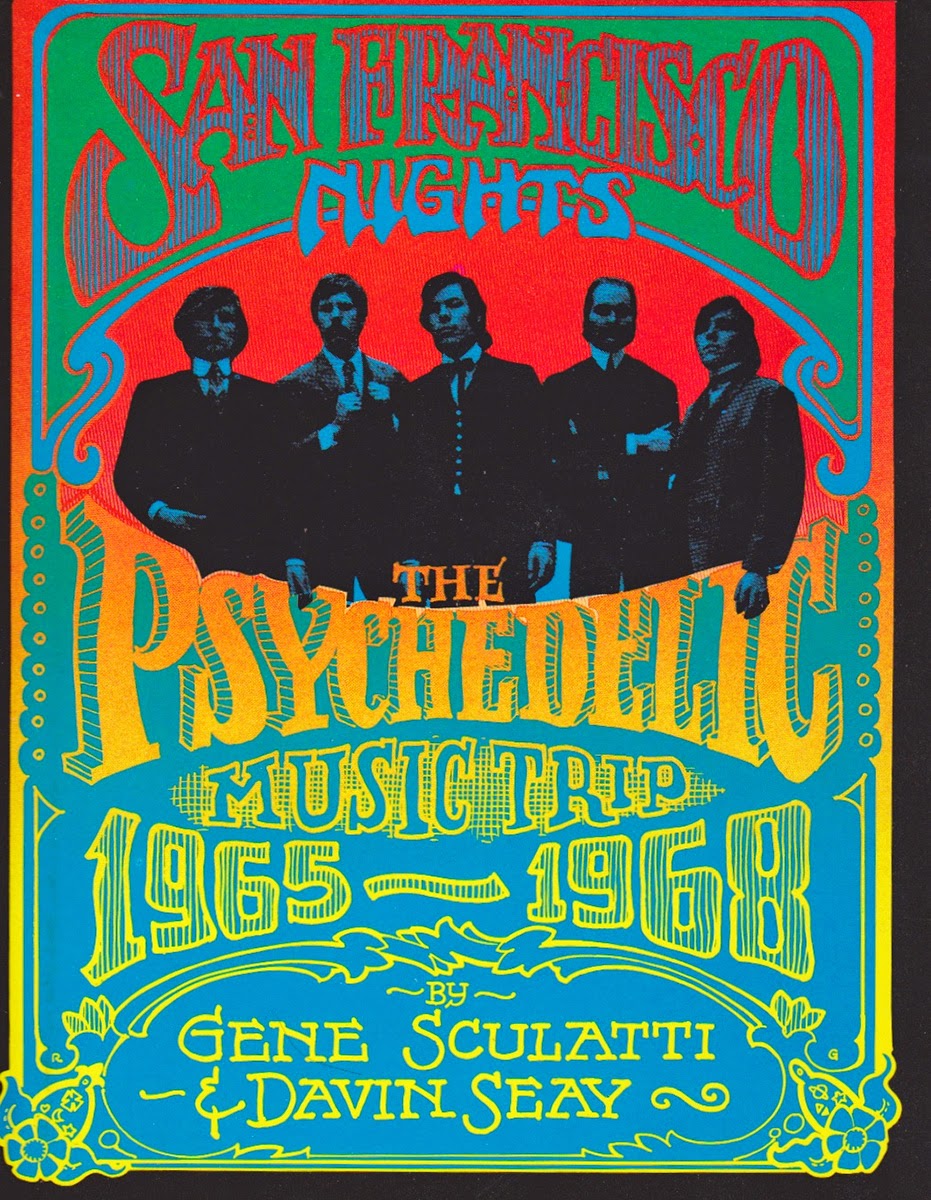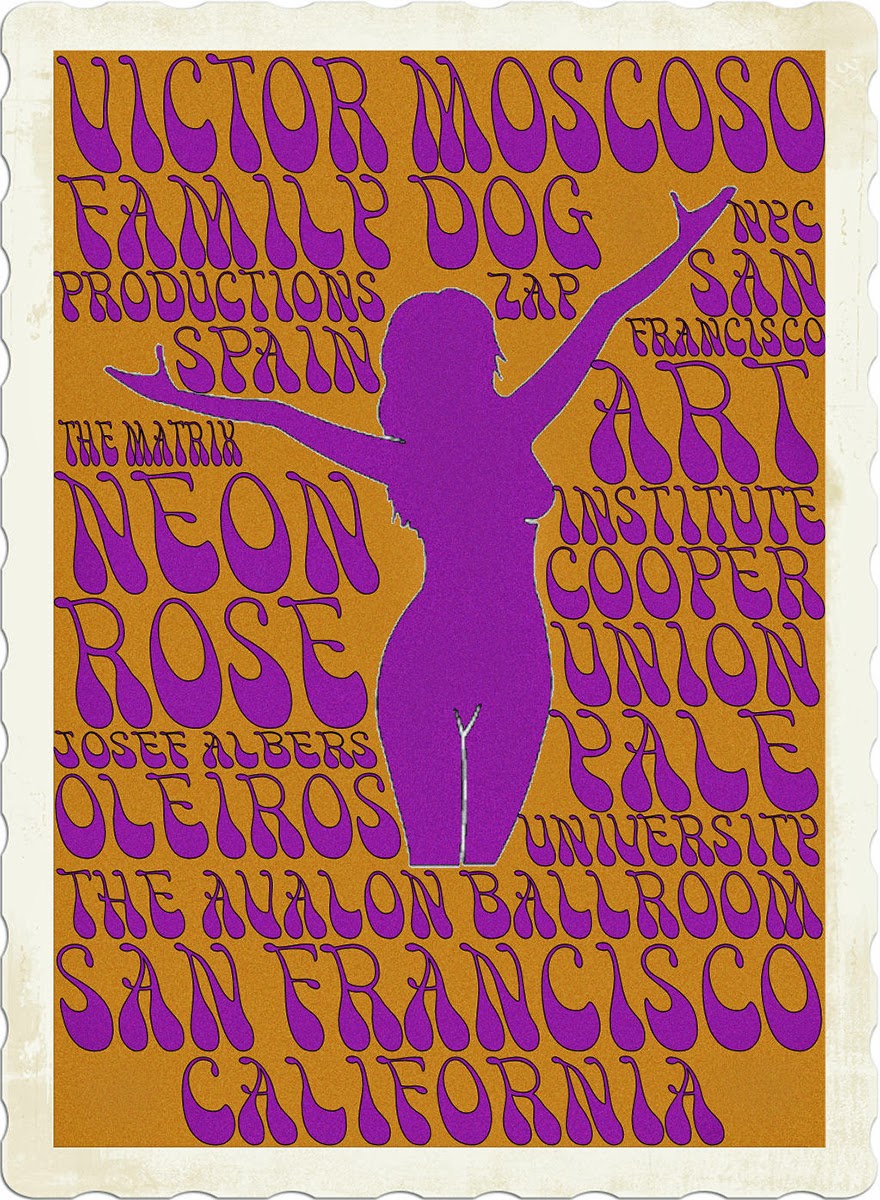Out of the numerous poster artists in San Francisco during the 60’s, Rick Griffin is widely considered to be the most influential. Born near Palos Verdes in 1944, Griffin took-up surfing at age 14. Heavily influenced by Mad magazine during the 50s he created a surf style that would become iconic. Griffin was soon working for surf legend Greg Noll, and after leaving high school he joined Surfer Magazine as a staff artist.
A 1963 car accident left Griffin with a damaged left eye and long scars
on the side of his face. It also affected him psychologically, and by
1964 Griffin decided it was time to venture outside of the surfer scene although he continued to contribute cartoons to the magazine.
While attending Chouinard Art Academy (now California Institute of the Arts) in Valencia, California, Griffin met fellow artist and future wife, Ida Pfefferle. Griffin’s cartoons and art became denser: populated with stoic Native Americans and sly references to the
counterculture scene he’d become a part of in San Francisco.
The couple started hanging with the Jook Savages –a group of musicians / artists- and in ’66 they headed to San Francisco, living out of their van. His work was soon in
high demand for its trademark creative blend of surf & psychedelic influences.
Griffin really got noticed for the poster he made announcing the 1967 Human Be-In at
San Francisco’s Golden Gate Park, later remembered as the Summer of Love’s inaugural event. He was soon hired to do coming-attractions posters for acts at the Avalon Ballroom and the Fillmore Auditorium (see The Art of Rock),
including Jimi Hendrix and the Jefferson Airplane. He also created the original logo for Rolling Stone magazine and started doing album covers for the Grateful Dead (Aoxomoxoa), The Eagles (On the Border), Jackson Browne (Late for the Sky), and Quicksilver Messenger Service (Sons of Mercury). Griffin’s cartoons were published in Zap Comix, the seminal underground magazine founded in 1967 by cartoonist R.
Crumb. He returned now and again to the surf world, producing the artwork for three surf movies: Pacific Vibrations (1969), Five Summer Stories (1972), and Blazing Boards (1983).
Now among the leaders in the poster art industry, Griffin teamed-up with fellow artists Alton Kelley, Stanley “Mouse” Miller, Victor
Moscoso, and Wes Wilson to form the Berkeley-Bonaparte distribution agency in 1967: the ultimate poster art producers of that time.
A conversion to Christianity in the early ’70s changed the thematic direction of Griffin’s art, but did not affect his skill. In 1973, he created his second Grateful Dead album cover for Wake of the Flood. In ZigZag magazine Griffin noted that his original inspiration for the cover came from the Old Testament Book of Revelations; the image he produced, however, was designed “to show an alternative to that. I wanted to juxtapose that Scripture with a loving image, an image of loving harvest.”
Still, there was that eerie skull cloud floating in the sky behind the main figure.
As the years went by he continued to create posters and art pieces for concerts and non-music events. He used an Egyptian theme for a Dead poster commemorating the band’s 1984 Berkeley Community Theatre series, and his skeletal parody of a famous Dutch Masters cigar ad, bearing the words “Peace on Earth,” was sent to everyone on the Dead Heads mailing
list during the 1987 Christmas season.
Rick Griffin died in a motorcycle accident in 1991 at age 47. His wake was attended by Jerry Garcia and other members of the late ’60s San Francisco art and music scene, as well as a number of his old Surfer magazine associates. Griffin was married and had five children.
More:
Rick Griffin Comic, Magazine and Cartoon Art
Rick Griffin: His Memory and His Art Live On































